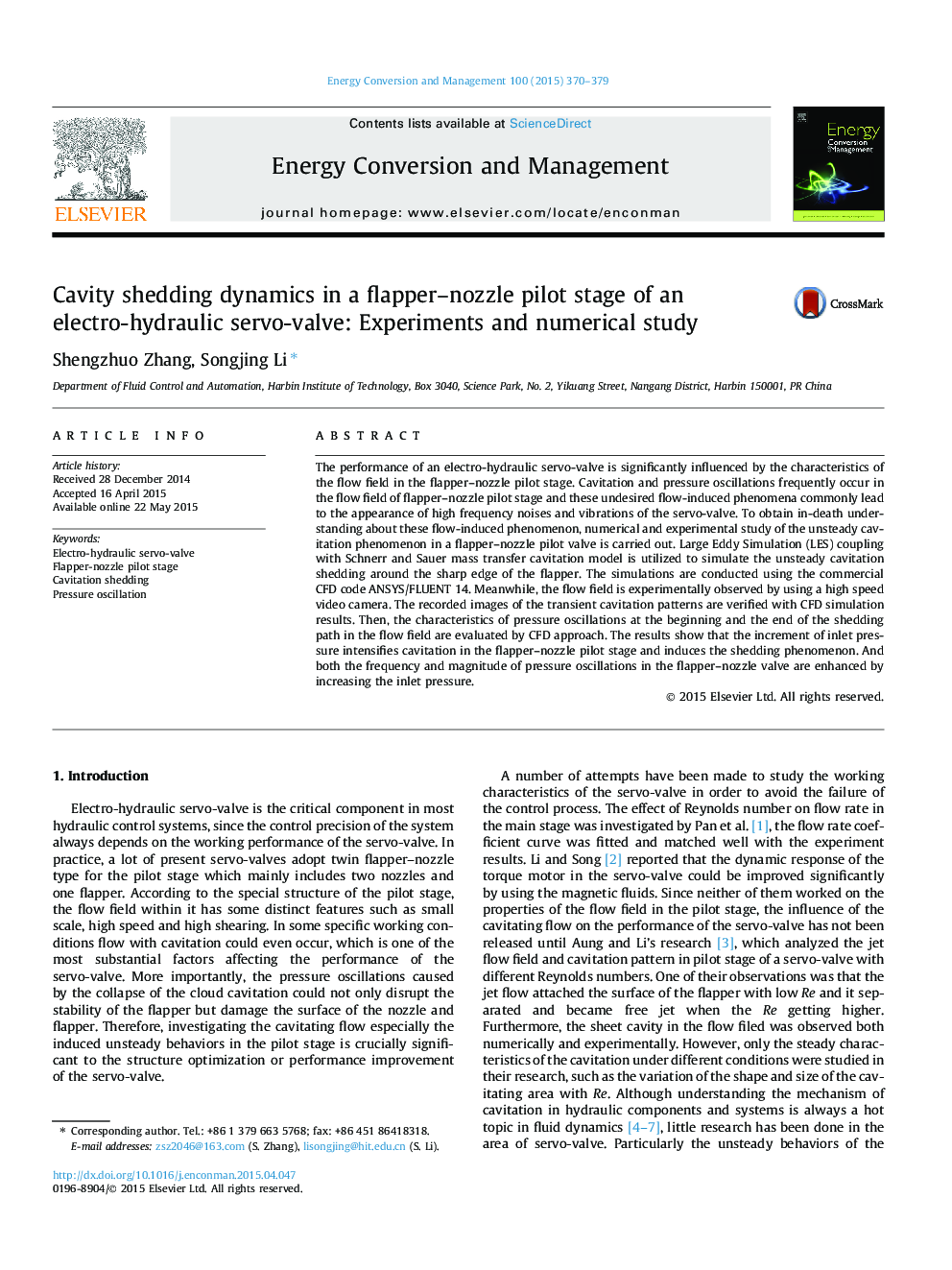| Article ID | Journal | Published Year | Pages | File Type |
|---|---|---|---|---|
| 763728 | Energy Conversion and Management | 2015 | 10 Pages |
•No cavitation shedding occurs when the nozzle inlet pressure is 1 MPa.•The transient shedding process is simulated and captured at inlet pressure 2 MPa and 3 MPa.•The shed cavitation at inlet pressure of 3 MPa can stay at downstream longer than that in the 2 MPa case.•The induced pressure oscillation at upstream is more severely than that at downstream.
The performance of an electro-hydraulic servo-valve is significantly influenced by the characteristics of the flow field in the flapper–nozzle pilot stage. Cavitation and pressure oscillations frequently occur in the flow field of flapper–nozzle pilot stage and these undesired flow-induced phenomena commonly lead to the appearance of high frequency noises and vibrations of the servo-valve. To obtain in-death understanding about these flow-induced phenomenon, numerical and experimental study of the unsteady cavitation phenomenon in a flapper–nozzle pilot valve is carried out. Large Eddy Simulation (LES) coupling with Schnerr and Sauer mass transfer cavitation model is utilized to simulate the unsteady cavitation shedding around the sharp edge of the flapper. The simulations are conducted using the commercial CFD code ANSYS/FLUENT 14. Meanwhile, the flow field is experimentally observed by using a high speed video camera. The recorded images of the transient cavitation patterns are verified with CFD simulation results. Then, the characteristics of pressure oscillations at the beginning and the end of the shedding path in the flow field are evaluated by CFD approach. The results show that the increment of inlet pressure intensifies cavitation in the flapper–nozzle pilot stage and induces the shedding phenomenon. And both the frequency and magnitude of pressure oscillations in the flapper–nozzle valve are enhanced by increasing the inlet pressure.
